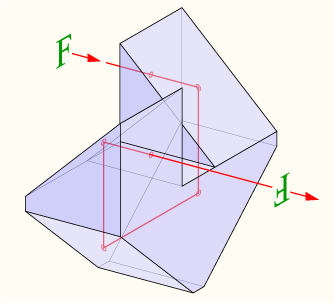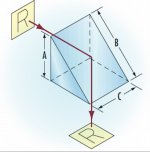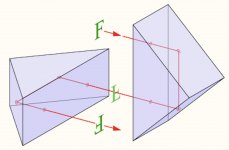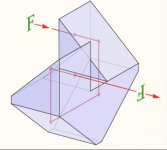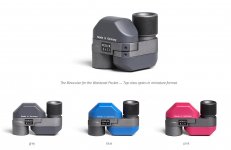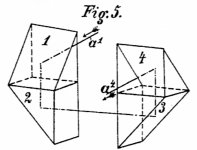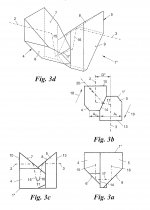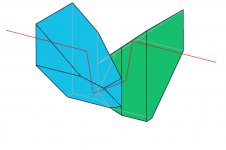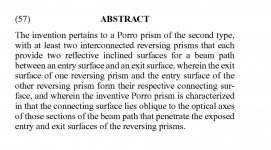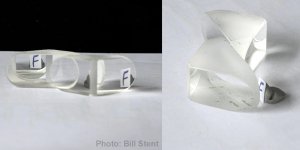Starting in the early 1850’s, Ignazio Porro experimented with using triangular prisms to correctly orientate an image when viewed through a telescope *
Then in 1854 he patented two ways in which to use 4 right angle reflections to erect an image - what we refer to as Porro Type I and Type II prisms.
For more detail see post #28 and on at:
New Horizons II
The Porro Type I image shows the first pair of reflections inverting the image, and then the second pair reversing it.
Not only do the number of reflections matter, but also the orientation of the reflective surfaces in relation to each other
e.g. when a Noblex monocular is folded flat for carry or storage the image is neither inverted nor reversed.
* As shown in an image from Swarovski, in a terrestrial viewing device such as a telescope or binocular:
a) the objective both inverts the image (top-to-bottom) and also reverses it (side-to-side);
b) the prisms are then used to correct both the inversion and reversal, and;
c) the eyepiece then magnifies the image to be viewed.
Although the image uses a 6 reflection Schmidt-Pechan roof prism, a Porro prism acts exactly the same.
And alternatively, lenses can be used to accomplish the inversion and reversal, as is routinely done with telescopic sights.
John
p.s. See an alternate view of a Porro Type II prism. It shows more clearly how the reflection pattern is the same as that of a Type I prism.
It’s from post #30 in the above link.





